.308 Norma
Member
Wonder how they tell what gun it's fired from if it has extractor marks all over the place? Some of my 9mm brass has been fired in at least 6 different guns.



Wonder how they tell what gun it's fired from if it has extractor marks all over the place? Some of my 9mm brass has been fired in at least 6 different guns.



Hmmm.This is known, technically as a "SWAG", or Scientific Wild Ass Guess.
Anyone recall the spent casing, in a little brown envelope, included with new guns for awhile? This was courtesy of the Peoples Republic of Maryland, where they had established a data base of examples of casings, cataloging the twin of the one you found in the envelope. After 15 years, and 5 million dollars, they failed to catch any criminals, and scrapped the program.
As others have said, if there is a recovered shell casing, and a gun that is suspected to have fired it, there's a good chance of a forensic match. But it's tough to do it wholesale.
BTW, I suspect a good cleaning with a bore brush would change the markings left on bullets in the bore, and a similar cleaning would effect the chamber and breechface as well. This last is a SWAG, too.
Moon

Again, running on the wild ass guess thing...regarding rifling marks, or case markings...it would seem to me that guns, made on the same machinery, will have virtually identical bores and chambers. The differences come down to minor scratches, that could well change with aggressive cleaning or lots of shooting.Hmmm.I’ll say if a bore brush is stiff enough to significantly alter the markings left on a bullet by the steel of the bore, it is time to find a softer brush material. (Its probably causing irreparable damage to the lands and grooves, breech face, etc.)
Stay safe.
Did some research on this, and the results were very confusing. The articles claimed that dealers had to send in the spent casings in the envelopes, which is unlikely, because the brass in the envelope remained when I bought a new gun. Now I'm in PA, not MD, but it makes even less sense to just keep track of just MD guns.For the longest time I thought those cases went to the bullet that was fired and subsequently sent for entry in the BBB database (Big Book of Bullets). You know, so they could have rifling matches on file.
Wonder how they tell what gun it's fired from if it has extractor marks all over the place? Some of my 9mm brass has been fired in at least 6 different guns.
To answer your question about the Hi-Point, the original owner, Tom, got with the federal firearms lab and asked what could he do to make it easier to identify bullets and cartridge cases fired from his firearms. For the bullets, the barrels have an odd number of left hand twist that only Hi-Point uses.I've seen this in numerous movies where a spent case is picked up and declared that it was fired from a certain gun. I know Glock's have a tell tail FP signature but how many pistols leave marks on a case that can then determine which pistol fired them? It's not only movies. Watching a documentary this am where they declared that the spent rounds were fired from a .45 Hi Point. I get the .45 but what marks are made by a Hi Point? What other marks are left that identify the type of pistol?
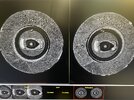
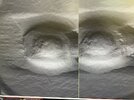
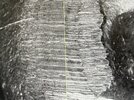
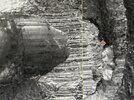
Yup, the Beretta 92/96 have a different operating system and the barrels don't tilt during unlocking.Some guns have a better timing in their design and shave very little, like the Beretta 92 and 96.
Well I don't know about top ten? I'd guess more like #1 of one! Fun read. Thx's. It's rare to get a response to a post that is fact filled. That is, many are highly subjective and/or hearsay. For a while I felt like I was back in college taking a forensics class. The only thing missing is the do-it-yourself quiz at the end. Well worth a second and third read. Don't think I can offer you much other than a couple of Atta-Boys. Many appreciations. Now to find a GS that has a Hi Point....Cartridge cases are the easiest to match up due to having several areas that are marked.
You have the breach face, the firing pin, the chamber markings, the extractor and the ejector.
Understanding what happened to the cartridge cases when firing the gun makes it easier. First the firing pin, or strike impacts the primer, the primer is the softest part of the cartridge and is pushed back into the breach face. This allows a small amount to enter the firing pin aperture. (That’s the hole the firing pin comes through, for those that don’t know) As the slide moves the the rear, the barrel drops a little into the unlocked position. The firing pin aperture will shave the primer, leaving the marks. Each type of firearm is a little different. Some guns have a better timing in their design and shave very little, like the Beretta 92 and 96.
View attachment 1191440
The extractor leaves a mark as it pulls the cartridge case from the chamber and the chamber leaves marks on the walls of the cartridge case. Then the cartridge case is slammed into the ejector, leaving a mark as it is ejected.
The examiner physically looks at the cartridge cases that are picked up at a crime scene to determine what he will enter into the NIBIN system.
After setting parameters the computer system takes a sierras of pictures that are stored into the database. Within a few hours those photos can be compared to similar photos in the system’s database.
View attachment 1191441View attachment 1191442
View attachment 1191446
Now depending on the manufacturer of the ammunition, the cartridge cases can have a different hardness which will cause the markings to be more or less.
When I started as a NIBIN examiners, most of the other examiners could only identify a Glock or a Hi-Point.
I got to the point that I could identify several firearms just from the breach face markings. After the State Lab trained new NIBIN examiners, they would spend a week or so with me.
When I started doing NIBIN the average number of matched shootings on my department were 40 to 45 a year. I brought that number up to 250 matches a year.
I was told that I was in the top 10 NIBIN examiners in the country.
You should do a search if you liked the info that I posted. I have several old post with lots of info.Well I don't know about top ten? I'd guess more like #1 of one! Fun read. Thx's. It's rare to get a response to a post that is fact filled. That is, many are highly subjective and/or hearsay. For a while I felt like I was back in college taking a forensics class. The only thing missing is the do-it-yourself quiz at the end. Well worth a second and third read. Don't think I can offer you much other than a couple of Atta-Boys. Many appreciations. Now to find a GS that has a Hi Point....
That was just basic info. I have several old post that cover a lot more.Sticky!
At least Gunny's tutorial!
Some of what is in the movies is slightly true. They call that based on facts. Other words they take part of what is fact and fit it to their liking.Thanks for the write up, Gunny. If it is said in movies or TV it because that is what is written in the script. No science involved because it's fiction.
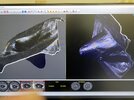
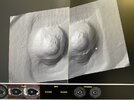
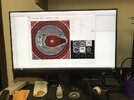
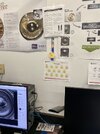
I pop in every now and then. My woodturning hobby keeps me pretty busy.TYVM Gunny. Good to see you!
Interesting. We share at least two of the same hobbies. Segment bowls, pedestals, burel bowls and such. I got into a fair amount of fight turning a square bowel. The dern corners are not fun to turn and less to sand. Don't mind a hijack to see some of your work. Or PM and we could share project pic. As far as your tech info, I'd love a story on how case to pistol ID helped solve a crime.I pop in every now and then. My woodturning hobby keeps me pretty busy.
These pic's are awesome! Never knew this science had come this far. Thanks!Some of what is in the movies is slightly true. They call that based on facts. Other words they take part of what is fact and fit it to their liking.
I saw an episode of a crime show where the had a computer in the back of an SUV. The guy places a cartridge cases into the computer and in minutes he gets all kinds of results. Most of which was all BS.
Cartridge cases are collected at a crime scene. On a major crime scene these cartridge cases will be each placed into an envelope and labeled, given the exact location it was picked up from.
The NIBIN examiners will then pick up the cartridge cases after they have been placed into evidence.
The cartridge cases are then marked with a sharpie to the number on the envelope. Each cartridge case is individually looked at with a strong magnify glass, like a jewels loop. The examiner determines which cartridge cases will be entered into the system.
I have had as little as one cartridge case, up to over 100 from crime sinces.
Once the cartridge case are picked out, the are set and aligned in a holder that is placed into a computer that has a super high resolution camera.
The examiner creates a case number for the shooting and then enters the cartridge cases info.
Once the cartridge cases is placed into the computer the examiner has to set certain parameters, that will place the cartridge case into a category in the system. It takes about 10 minutes for the computer to take several photos, which includes 3D photos of the firing pin strike. Once this is done, the examiner makes adjustments to focus and parameters before approving and submitting.
I have had shooting cases that have taken as long as 3 hours to sort and enter into the system.
After all entries are made the examiner submits them into the main database. It takes another 4 hours for the entries to become available for comparison.
Once they are ready the examiner gets on a different computer to do the comparisons. The computer generates 25 or more possible matches. The examiner has to physically look at each to make a comparison.
View attachment 1191766View attachment 1191767View attachment 1191769View attachment 1191770
NIBIN is used to match up shooting. Once matches are made, detectives decide if they need confrontation to help with their investigation or prosecution. At one time I submitted all of my matches to the State Lab, but after three years, they started to get backed up. The last year they accepted all of my NIBIN hits (which was 77) one was not confirmed and one was inconclusive.These pic's are awesome! Never knew this science had come this far. Thanks!
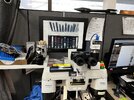
I’ll PM you about woodturning so, that we don’t go off topic on the forum.Interesting. We share at least two of the same hobbies. Segment bowls, pedestals, burel bowls and such. I got into a fair amount of fight turning a square bowel. The dern corners are not fun to turn and less to sand. Don't mind a hijack to see some of your work. Or PM and we could share project pic. As far as your tech info, I'd love a story on how case to pistol ID helped solve a crime.
For a long time it was easy to identify a bullet fired from a Glock pistol, but very hard to match it to the barrel.
